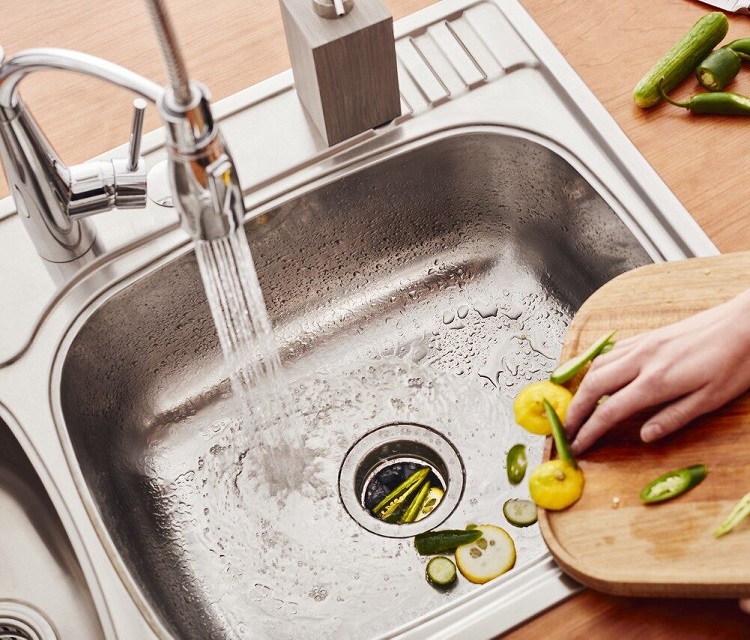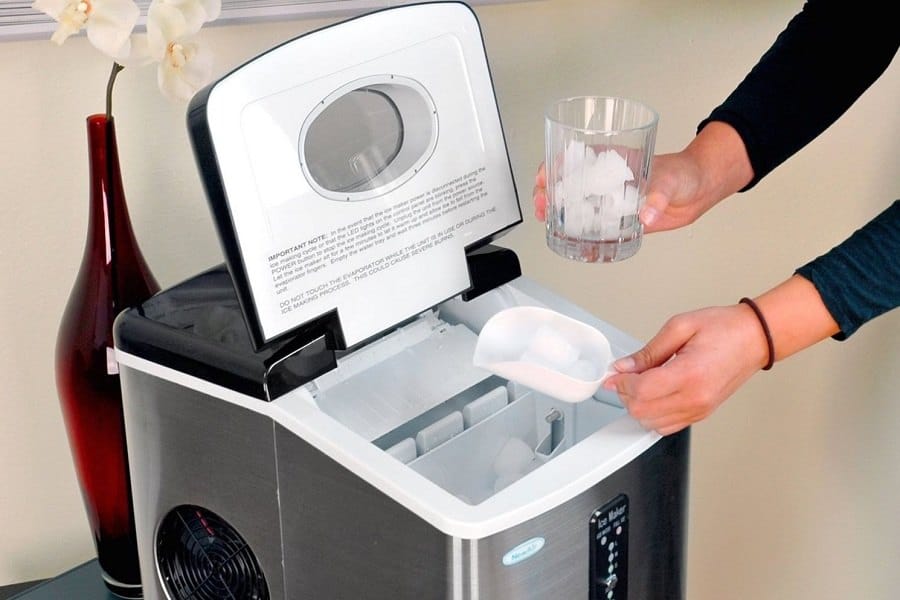Ice has become so common today that it is hard to imagine a time when ice was so hard to get. However, did you know that just 100 years ago, not nearly everyone had access to having ice whenever they wanted? In fact, in some parts of the world, ice is still a relative luxury as people still have to buy their ice from a delivery service or ice vendors. Thankfully, many ice makers exist on the market. But how does an ice maker work? In this post, we will consider the way this machine operates.
We will also consider the different types of ice makers Trusted Source Icemaker - Wikipedia An icemaker, ice generator, or ice machine may refer to either a consumer device for making ice, found inside a home freezer; a stand-alone appliance for making ice, or an industrial machine for making ice on a large scale. The term “ice machine” usually refers to the stand-alone appliance. en.wikipedia.org that you can buy right now, considering which of them is better for you or your business. Knowledge of how this machine works is important because it will make it easier for you to deal with any issues that might arise in the course of using it. With all these in mind, let’s consider first the different types of ice makers you can find.
Although there are several models of ice makers on the market, ice makers are generally divided into two types – commercial and residential ice makers. Each of these comes with unique features and drawbacks that you need to consider before buying them.
As the name implies, these ice makers are models that are used in commercial settings. Nearly all food service businesses have the commercial ice-making machine. When taken as a whole, this machine is powerful and geared towards creating ice in greater quantity and quality, as befits a machine for commercial purposes.
Although there are variations within the commercial ice-making machines, they usually fall within four types – the modular machine, the under-counter machine, the countertop makers, and lastly the combination machines.
Modular – This type of commercial option produces plenty of ice and is compatible with a separate unit that can store and dispense the ice. They are also available in different sizes, ranging from 22″ to 48″ widths. These machines are made to sit on an ice machine bin or a soda dispenser.
The output from the modular ice maker varies from 2,250 pounds a day to up to 1,000 pounds per day.
Undercounter – This next type of ice maker comes as a combination of different machines. These include a storage bin and can be installed under a high counter, which is just what the name implies. It will provide the needs for a bar, café, and restaurant, albeit small ones.
The output also varies; some can give you up to 350 pounds every day, while some can give you more than that.
Countertop – Another type of ice maker is the countertop option. As the name implies, it is set to sit on a countertop. It is a versatile type of ice maker, with the propensity to be used in residential or commercial settings. It often gives nugget-style ice, which makes it an excellent fit for healthcare situations since it is easier to chew.
The output here is not as impressive as some of the other types of ice makers, although some models have been discovered to give you up to 400 pounds of ice daily.
Combination – The last type of ice maker that we will consider in this section is the combination model. As the name implies, it is a versatile option that can do more than just dispense ice. These models can act as a water dispenser as well. Therefore, they are good for the office, for the cafeteria, and for hospitals. Additionally, since they produce nugget ice, you will find their ice easy to chew.
The output here is decent, with combination ice makers giving up to 500 pounds of ice daily. Another advantage of these machines is that they are portable and will not take up a lot of space wherever you choose to install them.
These ice makers are those that are best suited to homes. Due to where they are used, they are often compact, easy to set up, and easy to use. In this section, we consider some of the more popular types of residential ice makers on the market.
Our first type of residential ice maker is the countertop model. These are also referred to as portable ice makers. They are excellent machines for several reasons. For one, they are compact, they don’t need a permanent water line installed, and they can be plugged into your regular 110V outlet.
They sit on the countertop and are great for residential use since they produce their ice rapidly and in a matter of minutes. However, they do not double as freezers, which means that any ice that they store will defrost pretty quickly. When switched on, though, the water that melts is recycled to create more ice for you.
As they are portable, residential options, they do not provide plenty of ice and will only give you around 40 pounds of ice daily.
Their main advantage, though, is their portability. You can use these for parties, picnics, in the kitchen, at the pool, and other places where portability and compactness are an advantage over the quantity of ice produced.
The Frigidaire EFIC189 ice maker is one of the best compact ice makers according to reviews.
The next type in this category is the under-counter machines. These are in-built ice makers that are made to lie beneath or between your kitchen furniture. The caveat is that these are some of the more technical options to install. Except you have loads of experience, they should only be installed by a professional plumber. Apart from the work required in installing it between your carpentry, you also need to install a permanent water line. And some models will even need a drain line – plenty of work for anyone without plumbing skills.
Do these have any advantages? Well, of course! These ice makers are made to store more ice than your regular models, especially the portable option that we reviewed above. It will also ensure that your ice stays frozen for a longer time.
Although these are expensive, especially when compared with portable models, they are great at giving you a steady supply of ice for a longer time.
The last type of ice maker is relatively common in homes – the ice maker in the refrigerator. These do not require any form of installation as they already come with your refrigerator. However, their ice production is quite low when compared with the ice production from the dedicated ice makers on the market.
You can find this type of ice maker in the excellent Frigidaire FFSS2615TS. It comes as one of the best refrigerators according to users.
The process of making ice is straightforward – just freeze water. However, the challenge is freezing water into a particular shape or form. Producing nuggets or ice cubes is not as easy and will require an ice maker.
In this section, we look at the refrigeration process in ice makers.
The heart of any ice machine is the refrigeration system. It is similar to what you might discover in a freezer. There is a refrigerant, which is a substance that cools and has a low freezing point. This substance is pushed by the compressor through the condenser. It enters in a gaseous form, but it is cooled in the condenser, which makes it become a liquid.
The liquid refrigerant passes through an expansion valve to the evaporator. As the name implies, the evaporator changes the liquid back into a gas. Then this gas is passed back into the compressor and repeats the process as long as the refrigerator is powered.
With this foundation in mind, it will be easier for you to see how the ice maker works to create ice cubes, nuggets, and different types of ice.
The cycle above is what obtains for the commercial ice maker. For the portable or countertop models, it is relatively different.
How does an ice maker work? We believe that this post has revealed the answer to that question. With this knowledge, it will be easier for you to choose the best ice maker for you and be able to make minor repairs when the need arises.





